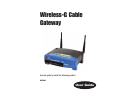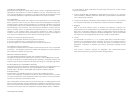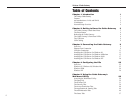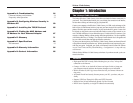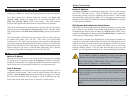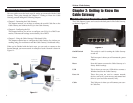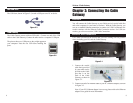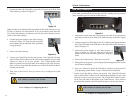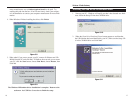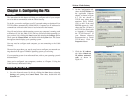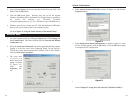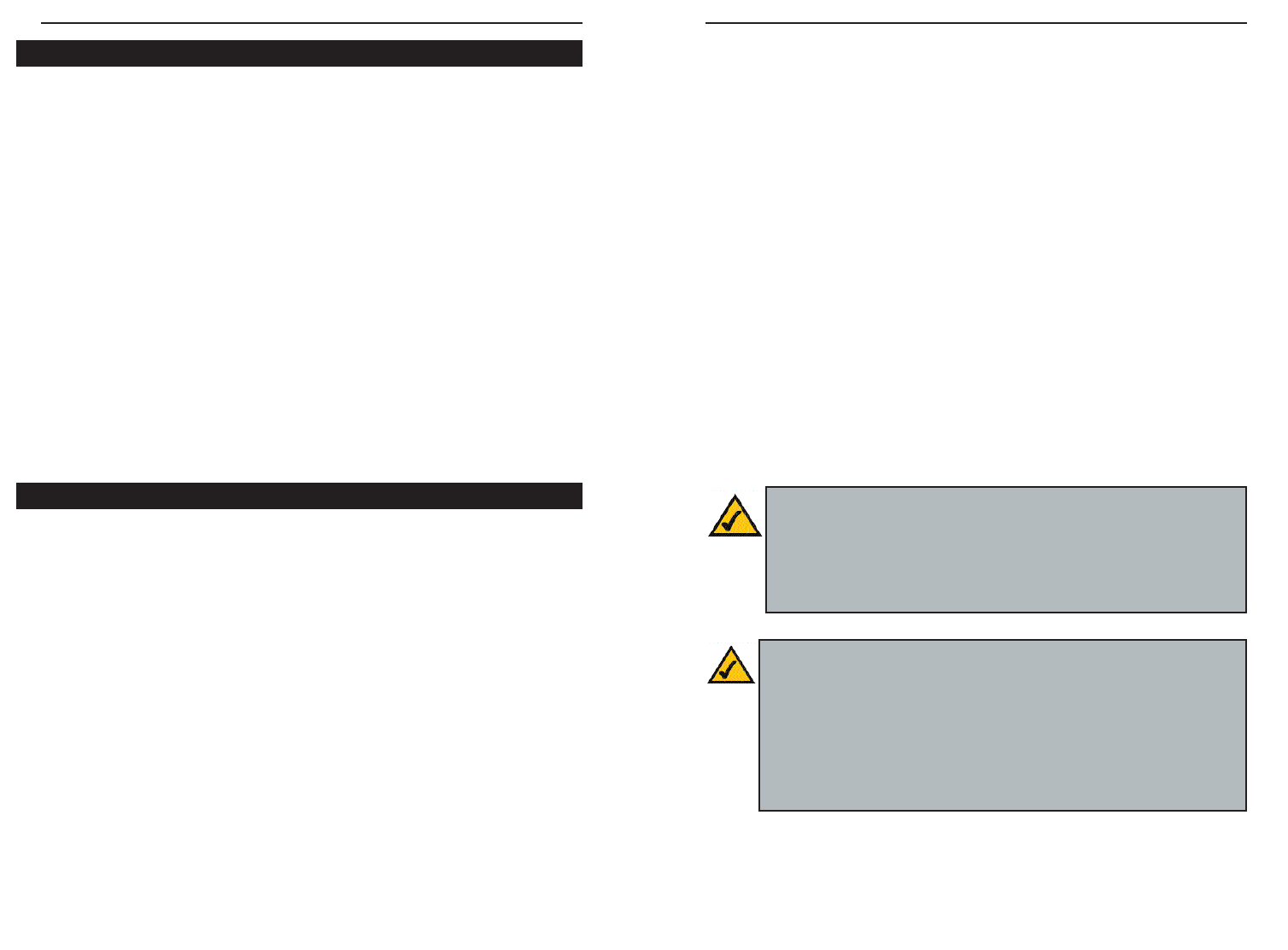
Dynamic IP Addresses
A dynamic IP address is automatically assigned to a device on the network,
such as PCs and print servers. These IP addresses are called “dynamic”
because they are only temporarily assigned to the PC or device. After a certain
time period, they expire and may change. If a PC logs onto the network (or the
Internet) and its dynamic IP address has expired, the DHCP server will assign
it a new dynamic IP address.
DHCP (Dynamic Host Configuration Protocol) Servers
DHCP frees you from having to assign IP addresses manually every time a new
user is added to your network. PCs and other network devices using dynamic
IP addressing are assigned a new IP address by a DHCP server. The PC or net-
work device obtaining an IP address is called the DHCP client. By default, the
Cable Gateway’s WAN setting is DHCP client.
A DHCP server can either be a designated PC on the network or another net-
work device, such as the Cable Gateway. By default, the Cable Gateway acts as
a DHCP server for your local network. If you already have a DHCP server run-
ning on your network, you must disable that DHCP server or the Cable
Gateway’s DHCP’s feature. If you run more than one DHCP server on your
network, you will experience network errors, such as conflicting IP addresses.
Note: Since the Cable Gateway is a device that connects two networks, it
needs two IP addresses—one for the LAN side, and one for the WAN side.
In this User Guide, you’ll see references to the “WAN IP address” and the
“LAN IP address.”
Since the Cable Gateway has firewall security, the only IP address on your
network that can be seen from the Internet is the Cable Gateway’s WAN IP
address.
32
Simply put, a router is a network device that connects two networks together.
The Cable Gateway has a built-in router that connects your Local Area
Network (LAN), which is the group of PCs in your home or office, to the
Wide Area Network (WAN), which is the Internet. The Cable Gateway
processes and regulates the data that travels between these two networks.
Think of the Cable Gateway as a network device with two sides: the first side is
made up of your private Local Area Network (LAN) of PCs. The other, public
side, is the Internet, or the Wide Area Network (WAN), outside of your home or
office.
The Cable Gateway’s firewall protects your network of PCs so users on the pub-
lic, Internet side cannot “see” your PCs. This is how your local network
remains private. The Cable Gateway protects your network by inspecting the
first packet coming in through the WAN port before delivery to the final desti-
nation in the local network. The Cable Gateway inspects Internet port services
like the web server, ftp server, or other Internet applications, and, if allowed,
will forward the packet to the appropriate PC on the LAN side.
What’s an IP Address?
IP stands for Internet Protocol. Every device on an IP-based network, including
PCs, print servers, and routers, requires an IP address to identify its “location,”
or address, on the network. This applies to both the WAN and LAN connections.
There are two ways of assigning an IP address to your network devices.
Static IP Addresses
A static IP address is a fixed IP address that you assign manually to a PC or
other device on the network. Since a static IP address remains valid until you
disable it, static IP addressing ensures that the device assigned it will always
have that same IP address until you change it. Static IP addresses are com-
monly used with network devices such as server PCs or print servers.
An Introduction to LANs and WANs
IP Addresses
Note: Even if you assign a static IP address to a PC, other PCs can
still use DHCP’s dynamic IP addressing, as long as the static IP
address is not within the DHCP range of the LAN IP Address.
If the Cable Gateway’s DHCP feature fails to provide a dynamic IP
address, refer to “Appendix A: Troubleshooting.”
Wireless-G Cable Gateway



